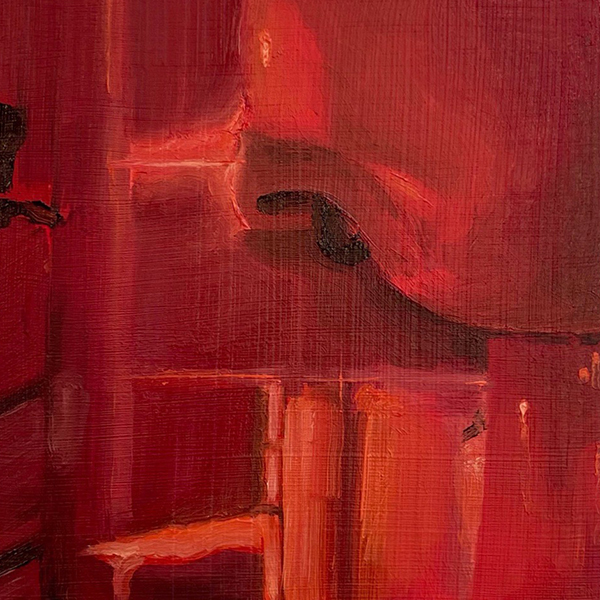Eabha Lambe’s present art practice is heavily focused on developing the materiality of painting and the surfaces used, within the wider context of representing light. Her focus began with painting ethereal light and shadows found on walls within domestic spaces. Combining this with her studies into the Magdalene Laundries, she began noticing quiet, insignificant moments on the walls and windows of the Donnybrook Laundry, in both photographs and found footage.
She aims to find a successful way of conveying the ignored history of the Irish Laundries within the paintings and the current political developments of this trauma. Continually exploring her place as an artist of dual British and Irish heritage, therefore the work moves between public and private and personal and collective history.
The practice moves between wooden panels and found or recycled wood, stretched and un stretched canvas and moving images and photography playing significant roles in her research. The traditional interest in light began from looking at the everyday and mundane within art and culture, specifically non-places.
As she has worked with photography to create the work, beginning to question the importance of photography in her painting, if the images stand alone as photographs, with the painting as a separate process. She is experimenting with painting the distortions and effects that printing out physical copies of digital images has on the outcome of her painting. The reduction of the images changes both qualities and ideas, which develop into an alternative focus of the painting. Lambe is exploring painting light from life studies as well as from a two-dimensional image, and has found that representing an intangible form, of the light and shadows on a surface can be difficult but allows for an understanding of the colours seen within the imagery, as they change dependent on the light.

“The paintings began as ambiguous, the context seemingly being of no historical importance. The attention was brought to an ignored subject, as people enjoy the colour and texture of the paint, yet the subject matter still eludes them.”

